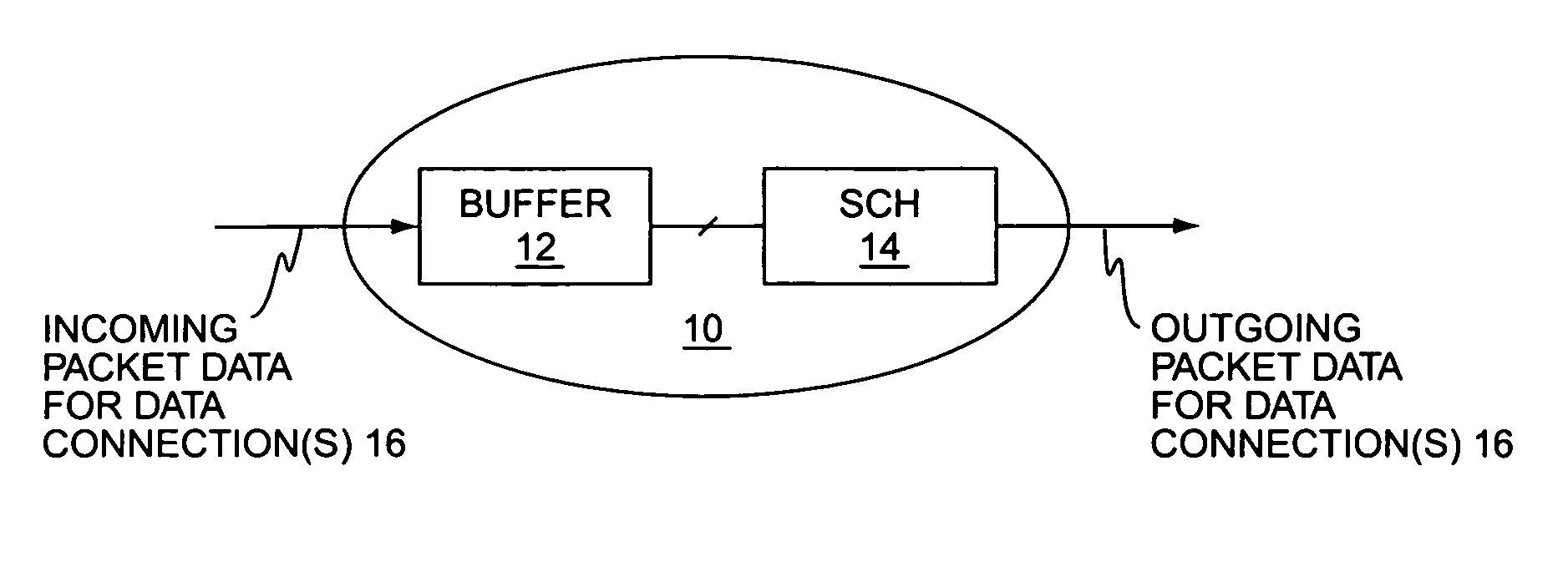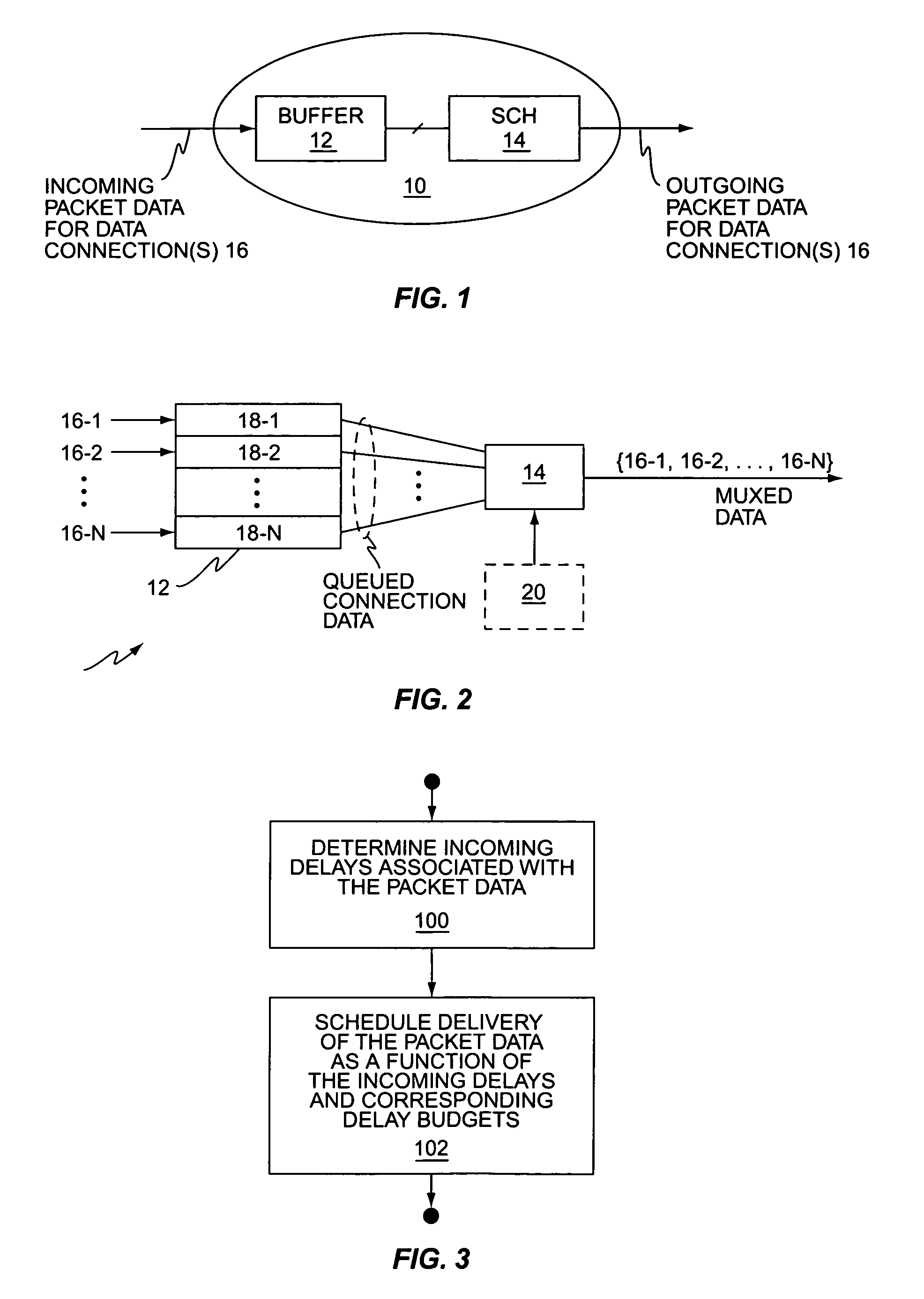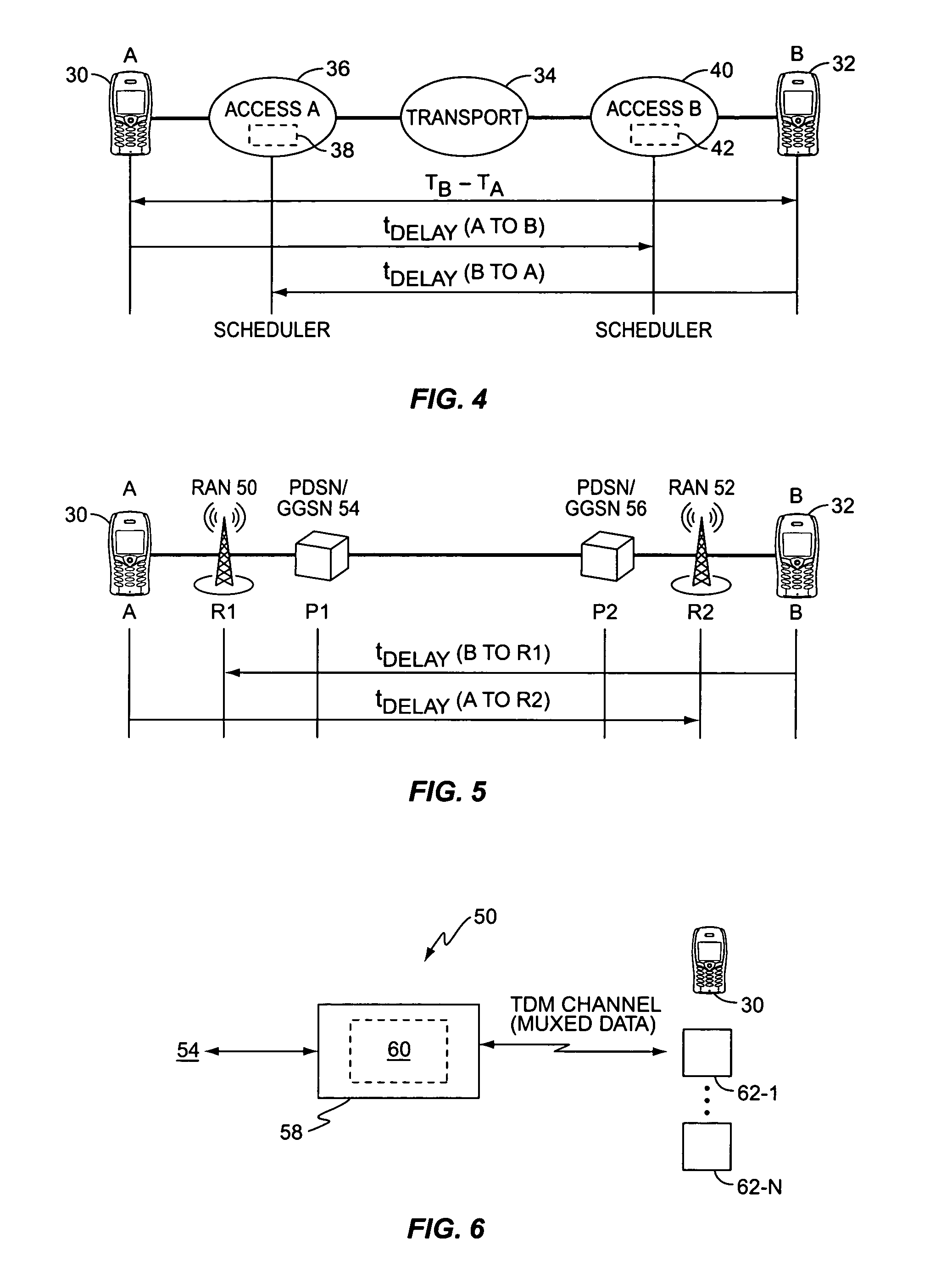Method and apparatus for improving scheduling in packet data networks
a packet data network and packet data technology, applied in data switching networks, frequency-division multiplexes, instruments, etc., can solve the problems of service schedulers with significant challenges, many types of packet data traffic are delay sensitive, delay budgets, etc., to reduce or eliminate the violation of end-to-end delay budgets and increase the overall capacity of scheduling
- Summary
- Abstract
- Description
- Claims
- Application Information
AI Technical Summary
Benefits of technology
Problems solved by technology
Method used
Image
Examples
Embodiment Construction
[0025]FIG. 1 illustrates a network node 10, including a buffer 12 and a packet data service scheduler 14. The node 10, which may be an intermediate node or a terminating node, receives incoming packet data for one or more logical data connections 16, and outputs that packet data according to a delivery schedule managed by the scheduler 14. As used herein, the term “logical data connection” generally connotes a given end-to-end data connection, such that the packet data traffic for that end-to-end connection flows through the node 10 as a distinct packet data stream.
[0026]Rather than simply pass through incoming packet data as it is received, the scheduler 14 of the node 10 schedules the “delivery” (i.e., output) of the packet data according to a defined scheduling algorithm. As explained later herein, such scheduling may be necessary where the delivery targets are wireless communication terminals having differing service requirements and dynamically changing radio conditions, but it...
PUM
 Login to View More
Login to View More Abstract
Description
Claims
Application Information
 Login to View More
Login to View More - R&D
- Intellectual Property
- Life Sciences
- Materials
- Tech Scout
- Unparalleled Data Quality
- Higher Quality Content
- 60% Fewer Hallucinations
Browse by: Latest US Patents, China's latest patents, Technical Efficacy Thesaurus, Application Domain, Technology Topic, Popular Technical Reports.
© 2025 PatSnap. All rights reserved.Legal|Privacy policy|Modern Slavery Act Transparency Statement|Sitemap|About US| Contact US: help@patsnap.com



